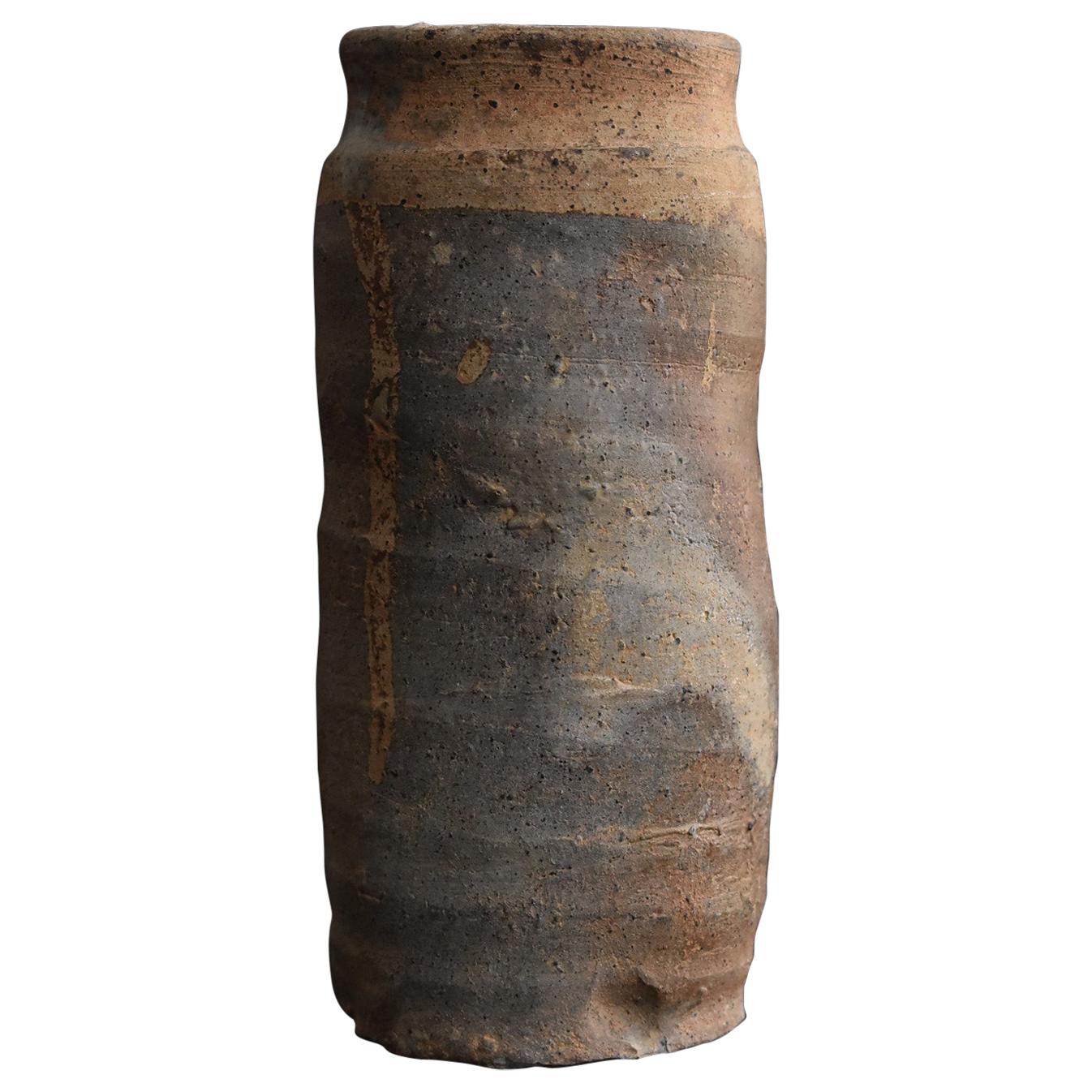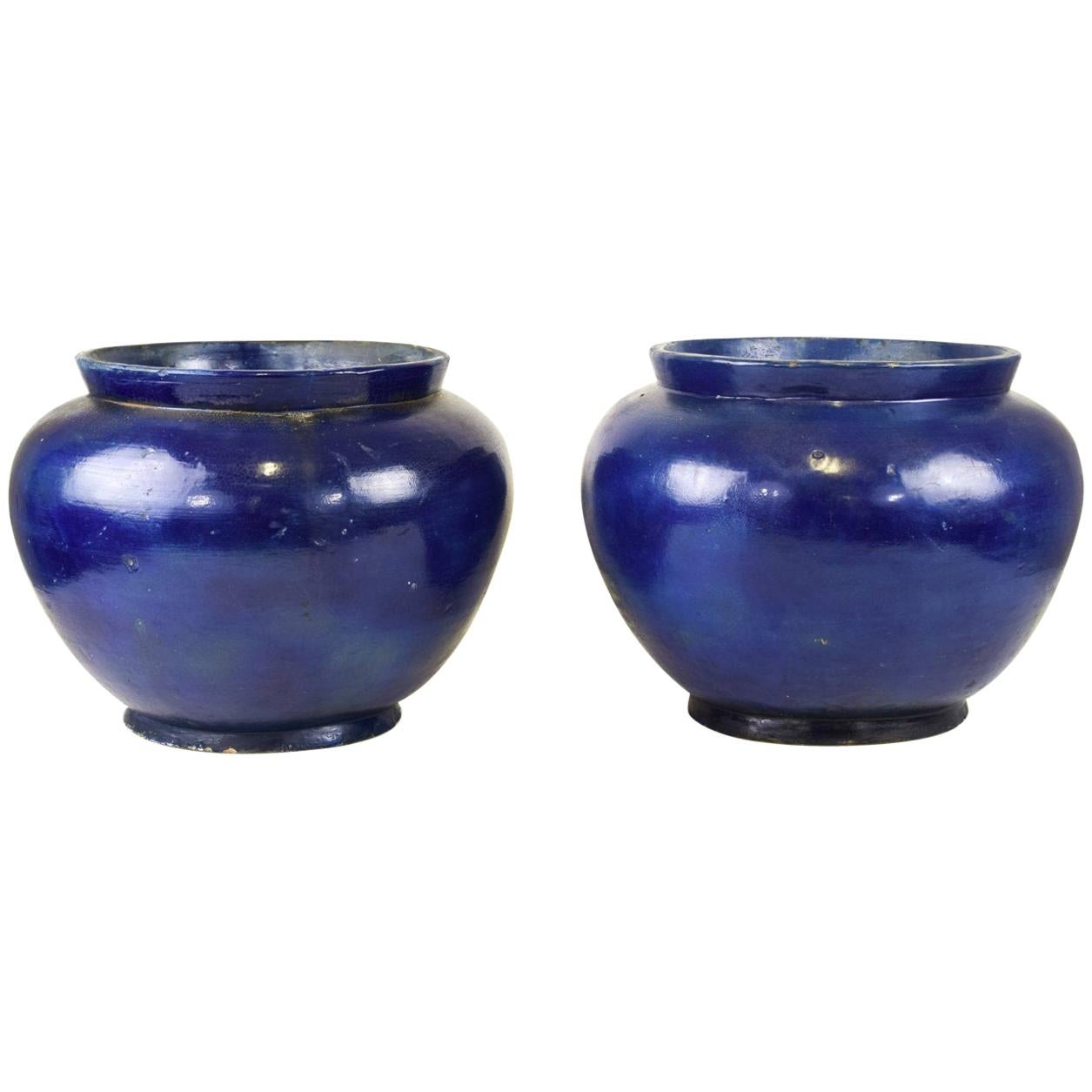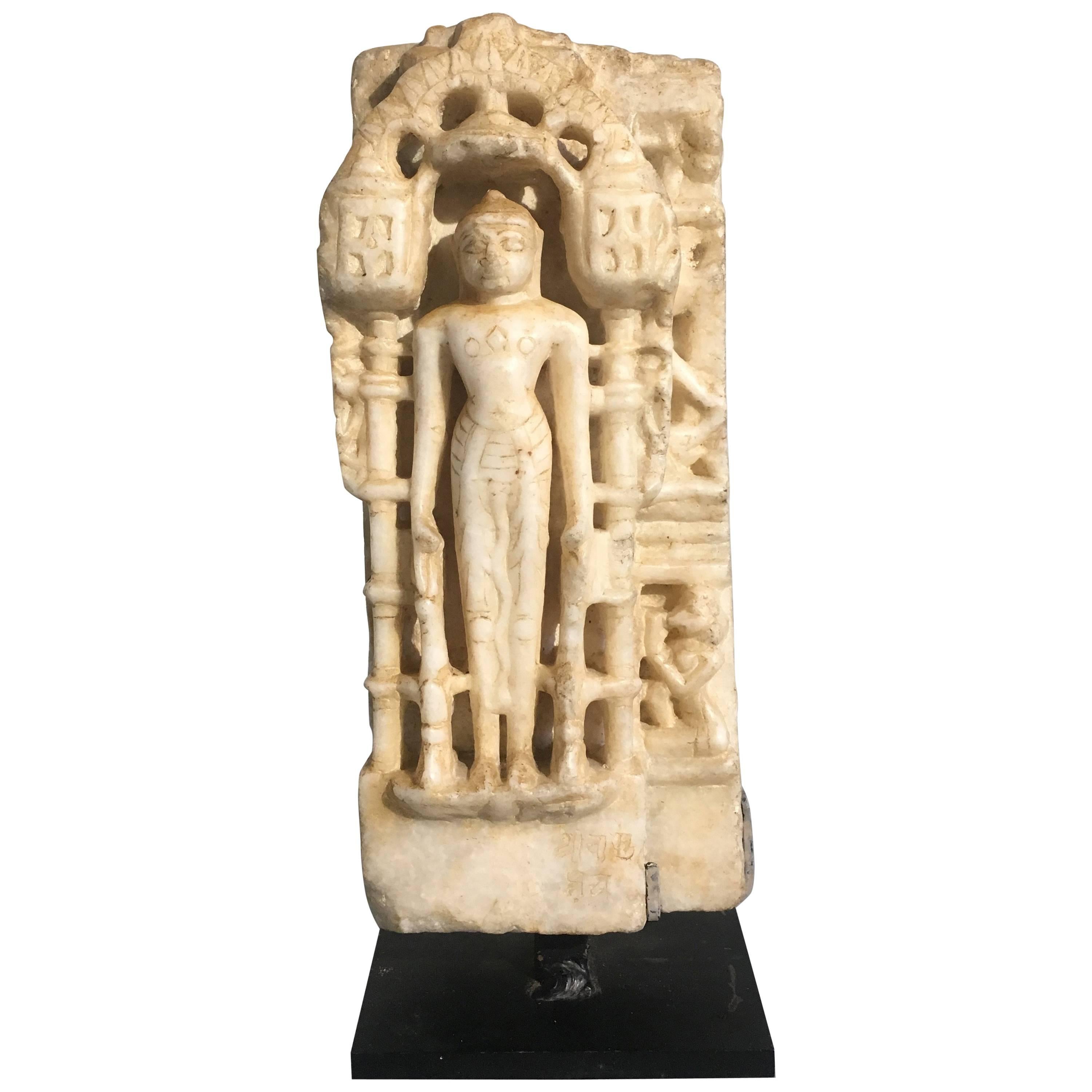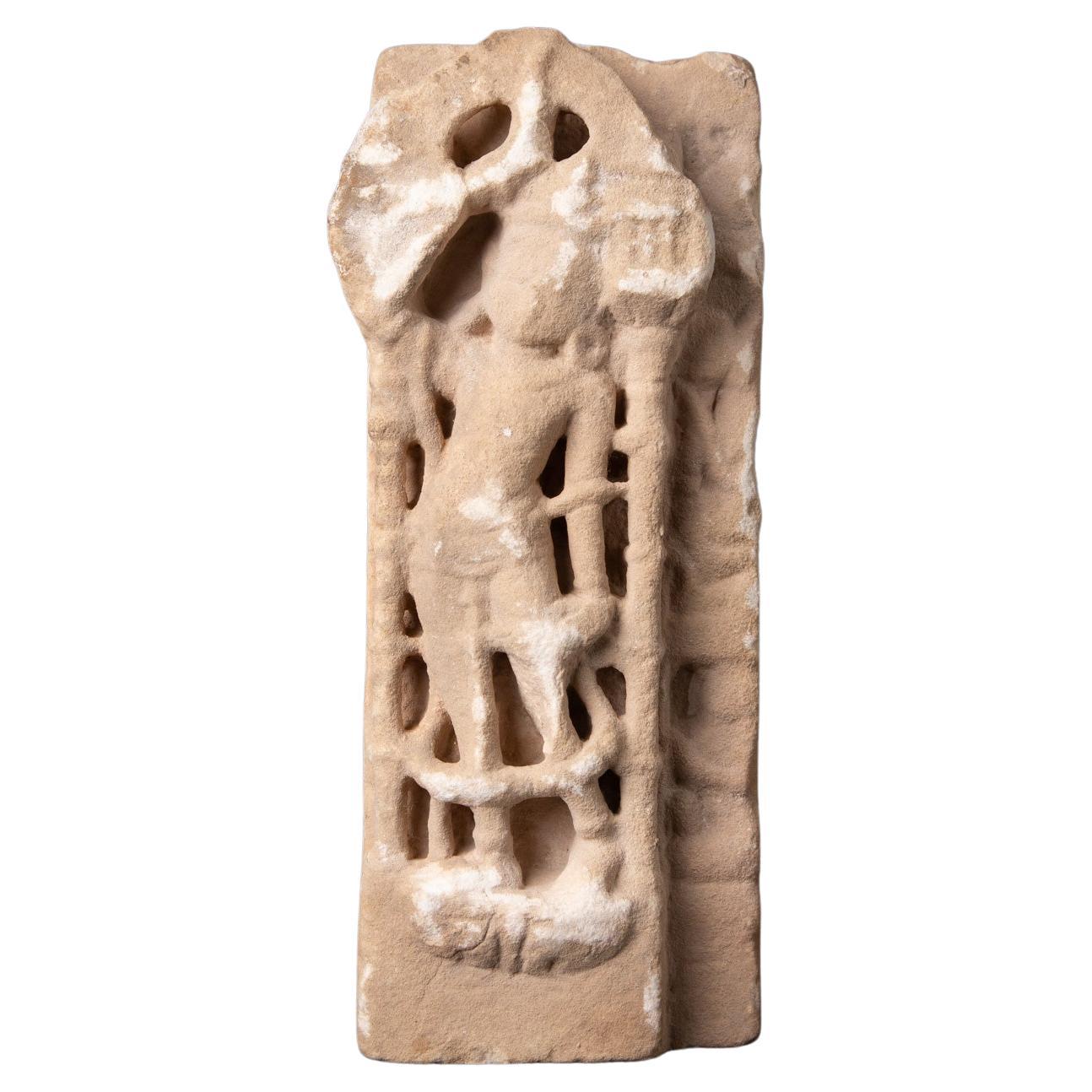Items Similar to Ancient Jain Altarpiece with Three Standing Jina's, Gujarat, India 16th Century
Want more images or videos?
Request additional images or videos from the seller
1 of 11
Ancient Jain Altarpiece with Three Standing Jina's, Gujarat, India 16th Century
About the Item
An authentic, ancient and exceptional Three Jina Shrine. For it’s age the altarpiece is in a very good condition and rather large. The image of three standing, nude Jinas flanked by the other 21 seated Jinas is rare. The lintel of the shrine is showing the nine comets and three seated figures.
EXPERTISE For: Artefact: Large ancient altarpiece / Three Jina shrine (trithirta). Country: India. Culture: Gujarat / Jain.
Dated: (1560), 1503 AD. Material: Bronze Lit: Alphen, J., “De Trap naar de Verlossing”, 2500 jaar kunst en religie van het Jaïnisme, Etnografisch Museum Antwerpen, 2000.
Remarks: dimensions: height: 26,7 cm. Jains, who had many followers in Gujarat and Rajasthan in Western India, gained religious merit, which would help in their future rebirths, by having such images made and donating them to temples and many such shrines have similar inscriptions. These icons offer an insight into medieval ritual culture and are well worth investigation.
- Dimensions:Height: 10.63 in (27 cm)Width: 7.09 in (18 cm)Depth: 2.37 in (6 cm)
- Style:Medieval (Of the Period)
- Materials and Techniques:
- Place of Origin:
- Period:
- Date of Manufacture:1560
- Condition:Wear consistent with age and use.
- Seller Location:Antwerp, BE
- Reference Number:1stDibs: LU931812108881
About the Seller
4.9
Platinum Seller
These expertly vetted sellers are 1stDibs' most experienced sellers and are rated highest by our customers.
Established in 1988
1stDibs seller since 2012
748 sales on 1stDibs
Typical response time: 1 hour
Associations
International Confederation of Art and Antique Dealers' Associations
- ShippingRetrieving quote...Ships From: Antwerp, Belgium
- Return PolicyA return for this item may be initiated within 3 days of delivery.
More From This SellerView All
- Ancient Buddhist Stone Tabletop Altar with a Lotus FlowerLocated in Antwerp, BEAn exceptional and very early Buddhist stone altar equipped with two handgrips for moving it to the spot of the planned sacrifice. Carved by hand from a si...Category
Antique 15th Century and Earlier Asian Hellenistic Antiquities
MaterialsSchist
- Artefact, Majapahit Terracotta Expressive Head, Java, 1300 ADLocated in Antwerp, BEA figurative construction ceramic probably a water collector simply modeled, this head is very expressive and the details can clearly be seen. The Trowulan archaeological site, approximately 100 square kilometres, located in the Mojokerto Regency is believed to contain the remains of what was once the capital city of the Majapahit Empire, featured by 14th century poet Mpu Prapanca in his poem Nagarakretagama. The city was razed during a fight between Girindrawardhana and Kertabhumi in 1478. The Trowulan site is the only archaeological site dating to the Hindu-Buddha classical age to be found in Indonesia. Archaeological remnants and artefacts of the old city in the Trowulan Site were found buried underground as well as on the surface and are still being found today.rtefact:Majapahit terracotta...Category
Antique 15th Century and Earlier Javanese Folk Art Ceramics
MaterialsCeramic
- Ceramic Sculpture with a Group of Playing Putti's 19th Century BelgiumLocated in Antwerp, BEBeautiful in detail and charming 19th century unglazed terracotta sculpture. Features a design of three cherubic children with lamps and fruit, playing with two goats on the base of ...Category
Antique 1890s Belgian Folk Art Figurative Sculptures
MaterialsTerracotta
- Folding Lounge Chair by Thonet with Adjustable Footstool 19th CenturyBy Gebrüder Thonet Vienna GmbHLocated in Antwerp, BEOriginal rare folding lounge chair in bentwood and cane from 1880 by Michael Thonet. Gebrüder Thonet, Vienna, Austria. Steam-bent beechwood and cane.Category
Antique 1880s Austrian Art Nouveau Lounge Chairs
MaterialsRattan, Bentwood
- Minimalist Free-Standing Wire Bookshelf by Tjerk Reijenga for PilastroBy Tjerk Reijenga, PilastroLocated in Antwerp, BEPilastro wire bookshelf with original enameled metal plates in white and red. In original condition with visible signs of wear and some paint loss and m...Category
Vintage 1950s Dutch Bauhaus Shelves
MaterialsWire
- Three Seat Sofa 'U' Frame Arms and Back with Tapered Slats in Style of OhlssonBy Folke OhlssonLocated in Antwerp, BEThis beautiful Swedish sofa in the style of Ohlssen with 'U'-shaped frame continuous in the armrests, a modern style with slats from the 1960s, gives a very special accent to the Mid...Category
Vintage 1960s Swedish Scandinavian Modern Lounge Chairs
MaterialsUpholstery, Teak
You May Also Like
- Antique Vases in Southern China / Small Vases / 16th to 17th CenturiesLocated in Sammu-shi, ChibaIt is believed that pottery baked in southern China in the early Ming dynasty was imported into Japan. It is a small size. The upper part is slightly ...Category
Antique 15th Century and Earlier Chinese Ming Antiquities
MaterialsPottery
- 16th-Century Indo-Portuguese Colonial Mother-of-pearl Gujarat CasketLocated in Amsterdam, NLAn exceptional Indo-Portuguese colonial mother-of-pearl veneered casket with silver mounts India, Gujarat, 2nd half of the 16th century, the silver mounts Goa or probably Lisbon Measures: H. 16 x W. 24.6 x D. 16.1 cm An exceptional Gujarati casket with a rectangular box and truncated pyramidal lid (with slopes on each side and a flat top) made from exotic wood, probably teak (Tectona grandis), covered with a mother-of-pearl mosaic. The tesserae, cut from the shell of the green turban sea snail (Turbo marmoratus, a marine gastropod) in the shape of fish scales, are pinned to the wooden structure with silver ball-headed nails. The casket is set on bracket feet on the corners. The masterfully engraved decoration of the silver mounts follows the most refined and erudite Mannerist repertoire of rinceaux and ferroneries dating from the mid-16th century. The high quality and refinement of the silver mounts and, likewise, the silver nails that replaced the original brass pins used to hold the mother-of-pearl tesserae in place indicate the work of a silversmith probably working in Lisbon in the second half of the 16th century. The Indian origin of this production, namely from Cambay (Khambhat) and Surat in the present state of Gujarat in north India, is, as for the last three decades, consensual and fully demonstrated, not only by documentary and literary evidence - such as descriptions, travelogues and contemporary archival documentation - but also by the survival in situ of 16th-century wooden structures covered in mother-of-pearl tesserae. A fine example is a canopy decorating the tomb (dargah) of the Sufi saint, Sheik Salim Chisti (1478-1572) in Fatehpur Sikri in Agra district in the state of Uttar Pradesh, north India. This is an artistic production, geometric in character and Islamic in nature, where usually the mother-of-pearl tesserae form complex designs of fish scales or, similar to the dishes also made using the same technique, with the thin brass sheets and pins, stylized lotus flowers. The truncated pyramidal shape corresponds, like their contemporary tortoiseshell counterparts also made in Gujarat, to a piece of furniture used in the Indian subcontinent within the Islamic world prior to the arrival of the first Portuguese. This shape, in fact, is very old and peculiar to East-Asian caskets, chests or boxes used to contain and protect Buddhist texts, the sutras. A similar chest is the famous and large reliquary chest from Lisbon cathedral that once contained the relics of the city's patron saint, Saint Vincent. Both match in shape, having the same kind of socle or pedestal and bracket feet, and in their engraved silver mountings, featuring the same type of refined, erudite decoration. Their differences lie in the silver borders that frame the entire length of the edges of the chest (both the box and the lid), pinned with silver nails, and on the lock plate, shaped like a coat of arms in the Lisbon example. Given the exceptional dimensions of the reliquary casket...Category
Antique 16th Century Indian Jewelry Boxes
MaterialsSilver
- Jadeite Carving of a Standing Lady, China, 20th CenturyLocated in Roma, ITThis jadeite carving of a standing lady was realized in China in the 20th century. Realized in green jadeite, this precious statue is carved in the ...Category
20th Century Chinese Antiquities
MaterialsJade
- Pair of Ancient Blue Terracotta Vases, by Oriental Manufacture, 19th CenturyLocated in Roma, ITThese pair of blue vases is an original decorative terracotta object realized in the second half of the 19th century by Oriental manufacture. A beautiful couple of terracotta vase...Category
Late 20th Century Asian Antiquities
MaterialsTerracotta
- 12th Century Indian Carved White Marble Figure of a Jain Tirthankara or JinaLocated in Austin, TXA well carved Indian white marble Jain temple relief fragment featuring an image of a Jina, circa 12th century, Rajasthan or Gujarat, India. The Tirthan...Category
Antique 15th Century and Earlier Indian Antiquities
MaterialsMarble
- 14th Century Antique marble statue from Jain temple from IndiaLocated in DEVENTER, NLAntique marble statue from Jain temple from India, 14th century Material : marble 32,5 cm high 14,2 cm wide and 9,5 cm deep 14th century Origina...Category
Antique 15th Century and Earlier Burmese Sculptures and Carvings
MaterialsMarble
Recently Viewed
View AllMore Ways To Browse
Craft Of India
Antique Furniture In India
India Country
India Craft
Ancient Rare
Asian Authentic Furniture
Ancient Asia
Ancient Asian
Ancient Asian Art
Ancient Antiquities
Antique Medieval Furniture
Antique Art Of India
Ancient India
16th Century Hand Art
India Bronze
Asian Country Antique Furniture
Antique Shrine
India Temple





